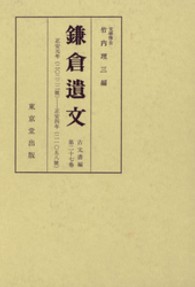Full Description
Crucible of Conflict is an ethnographic and historical study of Hindu castes, matrilineal family structure, popular religious traditions, and ethnic conflict. It is also the first full-length ethnography of Sri Lanka's east coast, an area that suffered heavily in the 2004 tsunami and that is of vital significance to the political future of the island nation. Since the bitter guerrilla war for an independent Tamil homeland in Sri Lanka broke out in 1983, the easternmost region of the island has emerged as a strategic site of conflict. Dennis B. McGilvray argues that any long-term resolution of the ethnic conflict must accommodate this region, in which Sinhalese Buddhists, Tamil Hindus, and Tamil-speaking Muslims are each a significant share of the population. McGilvray explores the densely populated farming and fishing settlements in this coastal zone, focusing on the Tamil and Muslim inhabitants of an agricultural town in the Ampara District. Drawing on fieldwork conducted over more than thirty years as well as on Tamil and Dutch historical sources, he describes the regional dominance of a non-Brahmin matrilineal caste of thirteenth-century Kerala origin. The Muslims, who acquired dowry lands and matrilineal family patterns through local intermarriages, have in the twentieth century emerged from Hindu caste domination and are now the Tamil Hindus' political and economic equals. Crucible of Conflict offers a uniquely detailed account of Muslim kinship and community organization in eastern Sri Lanka, as well as a comparison of Tamil and Muslim practices and institutions. McGilvray concludes with an analysis of the interethnic tensions and communal violence that have intensified in recent years.
Contents
List of Illustrations ix
List of Tables xiii
Acknowledgments xv
Note on Transliteration xvii
Part 1. Framing Fieldwork in the Batticaloa Region
Introduction 3
Chapter 1. The Research Setting 21
Part 2. Problems of History and Anthropology
Chapter 2. Past and Present 55
Chapter 3. Issues in Comparative Ethnography 97
Part 3. Tamil and Muslim Social Structure
Chapter 4. Views of the Tamil Caste Hierarchy 151
Chapter 5. The Tamil High Caste Alliance 167
Chapter 6.The Kudi in Action 189
Chapter 7. A Profile of the Tamil Specialist Castes 210
Chapter 8. The Moors: Matrilineal Muslims 266
Chapter 9. Muslim Elites and Specialists 292
Part 4. Ethnicity, Conflict, and the War in the East
Chapter 10. Ethnic Identities and Communal Violence 313
Epilogue: Fieldnotes from the War Zone 331
Appendix 1. Tamil Kinship Terms in Akkaraipattu 365
Appendix 2. Moorish Kinship Terms in Akkaraipattu 367
Notes 369
Glossary 389
Bibliography 395
Index 417
-

- 電子書籍
- わけありシングルママの再会愛【タテヨミ…
-

- 電子書籍
- 増補版 笑って生ききる 寂聴流 悔いの…
-

- 電子書籍
- 爪痕―それでも結婚、続けますか?― 分…
-

- 電子書籍
- 鎌倉遺文 〈古文書編 第27巻〉 自正…
-

- 電子書籍
- 報道の脳死 新潮新書



